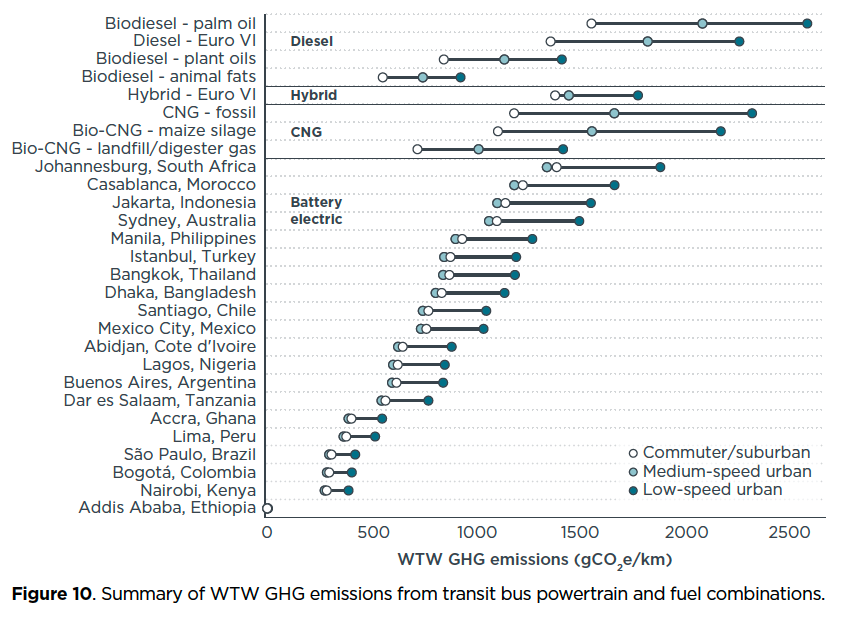Working Paper
Low-carbon technology pathways for soot-free urban bus fleets in 20 megacities
Urban transit bus fleets are a significant source of air pollutant emissions, including black carbon, a harmful ultrafine particle and potent short-lived climate pollutant. Transit bus fleets are therefore an important target for accelerated transitions to clean engine technologies and fuels. A number of engine technologies and enabling fuels are available today that achieve “soot-free” emissions performance—the near elimination of emissions of black carbon and other harmful pollutants. However, there are open questions as to the relative climate emissions impact of the various technologies and how it varies across cities and within cities depending on the operating mode of the bus.
To address these questions, this working paper evaluates well-to-wheel (WTW) greenhouse gas (GHG) emissions from commercially available soot-free transit buses in 20 megacities. Bus types include diesel, diesel-electric hybrid, and compressed natural gas (CNG) buses powered by engines certified to Euro VI or EPA 2010 emission standards, as well as battery electric buses. For diesel and CNG buses, GHG emissions are calculated for conventional fossil fuels, as well as select biofuel alternatives.
The main objectives of this analysis are to investigate:
- How WTW GHG emissions vary across soot-free transit bus powertrain and fuel options
- The impact of driving cycle on WTW GHG emissions from transit buses, and
- The influence of electricity generation source mix on WTW GHG emissions from battery electric buses
Key findings of the assessment include:
- In almost all cases, battery electric buses have lower WTW GHG emissions than fossil-fueled diesel, CNG, or diesel-electric hybrid buses. GHG emissions savings are maximized over driving cycles where battery electric buses have the highest efficiency advantages—low- and medium-speed urban operations—and for regions with low carbon intensity electricity grids.
- An electric bus replacing a conventional diesel bus on a low- or medium-speed urban route would result in lifetime GHG emissions savings of approximately 500 tonnes in regions with high carbon intensity electricity grids, 1,000 tonnes in regions with medium carbon intensity grids, and 1,500 tonnes in regions with low carbon intensity grids.
- Operating conditions have a significant impact on GHG emissions, in particular for diesel and CNG buses, whose efficiency is most sensitive to driving cycle. Transitioning from a low-speed urban driving cycle to a medium-speed cycle would potentially reduce GHG emissions by 20%–30% depending on the powertrain used.
- Biofuels may be an option to accelerate GHG emissions reductions in areas with higher electricity grid carbon intensities. However, transit operators considering transitioning to these alternative fuels need to carefully assess the carbon intensity of potential biofuel alternatives to ensure that GHG emission reduction goals are realized. For high-carbon-intensity biofuels, such as palm oil biodiesel, WTW GHG emissions can be higher than for fossil-derived conventional fuels. Lower carbon-intensity biofuels considered here indicate relative GHG emissions reductions on the order of ~50%.
- WTW GHG emissions for CNG and diesel Euro VI buses fueled by fossil-derived fuels are generally similar; CNG buses have slightly lower emissions over commuter/suburban and medium-speed urban route types, whereas diesel buses perform slightly better under low-speed urban operating conditions.

